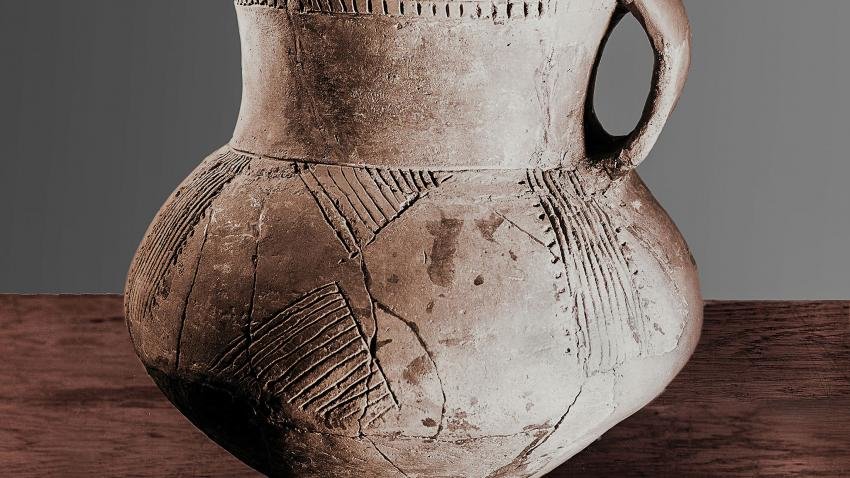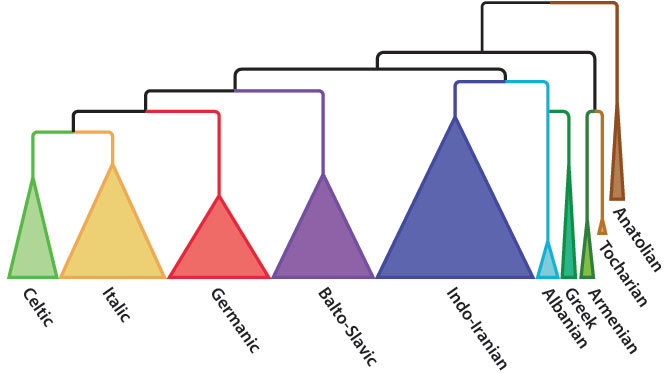
Two long-awaited studies, one described online this week in a preprint and another scheduled for publication later this month, have now used different methods to support one leading hypothesis: that PIE was first spoken by pastoral herders who lived in the vast steppe lands north of the Black Sea beginning about 6000 years ago. One study points out that these steppe land herders have left their genetic mark on most Europeans living today.
The studies' conclusions emerge from state-of-the-art ancient DNA and linguistic analyses, but the debate over PIE's origins is likely to continue. A rival hypothesis—that early farmers living in Anatolia (modern Turkey) about 8000 years ago were the original PIE speakers—is not ruled out by the new analyses, most agree. Although the steppe hypothesis has now received a major boost, "I would not say the Anatolian hypothesis has been killed," says Carles Lalueza-Fox, a geneticist at Pompeu Fabra University in Barcelona, Spain, who participated in neither of the new studies.
Up until the 1980s, variations of the steppe hypothesis held sway among most linguists and archaeologists tracking down Indo-European's birthplace. Then in 1987, archaeologist Colin Renfrew of the University of Cambridge in the United Kingdom proposed that PIE spread with farming from its origins in the Fertile Crescent of the Middle East, moving west into Europe and east further into Asia; over time the languages continued to spread and diversify into the many Indo-European languages we know today.
Traditional linguists, meanwhile, painstakingly reconstructed PIE by extrapolating back from modern languages and ancient writings. (Listen to a short fable spoken in PIE here.) They disdained Renfrew's idea of an Anatolian homeland, arguing for example that the languages were still too similar to have begun diverging 8000 years ago.
But many archaeologists noted that genetic and archaeological studies did indeed suggest massive ancient migrations from the Middle East into Europe that could have brought PIE and sparked such language diversification. In 2003, evolutionary biologists Russell Gray and Quentin Atkinson of the University of Auckland in New Zealand used computational methods from evolutionary biology to track words as they changed over time, and concluded that the Anatolian hypothesis was right. But steppe supporters remained unconvinced, even after Gray's team published a confirming analysis in Science in 2012.

The team focused on sections of DNA that they suspected would provide markers for past population movements and identified nearly 400,000 DNA positions across the genome in each individual. They used new techniques to zero in on the key positions in the nuclear DNA, allowing them to analyze twice as many ancient nuclear DNA samples from Europe and Asia as previously reported in the entire literature.
The comparison of the two cultures' DNA showed that the four Corded Ware people could trace an astonishing three-quarters of their ancestry to the Yamnaya. That suggests a massive migration of Yamnaya people from their steppe homeland into central Europe about 4500 years ago, one that could have spread an early form of the Indo-European language, the team concludes. Thus the paper for the first time links two far-flung material cultures to specific genetic signatures and to each other—and suggests, the team says, that they spoke a form of Indo-European.
The Corded Ware culture soon spread across north and central Europe, extending as far as today's Scandinavia. So the "steppe ancestry," as the authors of the preprint call it, is found in most present-day Europeans, who can trace their ancestry back to both the Corded Ware people and the earlier Yamnaya. The work thus adds to genetic findings from last fall showing that the genetic makeup of today's Europeans is more complicated than anyone expected.
The results are a "smoking gun" that an ancient migration into Europe from the steppe occurred, says Pontus Skoglund, an ancient DNA specialist who is now working in Reich's lab but was not a co-author on the paper. (Although the paper is publicly available on a preprint server, it is not yet published, and the authors declined to discuss their work until it's published.) The paper "levels the playing field between the steppe hypothesis and the Anatolian hypothesis by showing that the spread of farming was not the only large migration into Europe," Skoglund says.
The second new paper to address PIE's origin, in press at Language and due to be published online during the last week of February, uses linguistic data to focus on when PIE arose. A team led by University of California, Berkeley, linguists Andrew Garrett and Will Chang employed the language database and evolutionary methods previously used by Gray to create a family tree of the Indo-European languages from their first origins in PIE. But in certain cases, Garrett and Chang's group declared that one language was directly ancestral to another and put that into their tree as a certainty. For example, they assumed that Latin was directly ancestral to Romance languages such as Spanish, French, and Italian—something that many but not all linguists agree on—and that Vedic Sanskrit was directly ancestral to the Indo-Aryan languages spoken on the Indian subcontinent.
These constraints transformed the results from what Gray's team has published: Garrett, Chang, and their colleagues found that the origins of PIE were about 6000 years ago, consistent with the steppe hypothesis but not the Anatolian, because the farming migration out of the Middle East was 8000 years ago. Once the original PIE speakers began to sweep out of the steppes about 4500 years ago, their languages spread and diversified, Garrett's team says.
But many supporters of the Anatolian hypothesis remain staunchly unconvinced. Paul Heggarty, a linguist at the Max Planck Institute for Evolutionary Anthropology in Leipzig, Germany, questions Garrett's methods, arguing that, for example, linguists cannot be sure if the Latin attested to in written documents really was the direct ancestor of later Romance languages, rather than some dialect of Latin for which no record remains. Even small differences in the true ancestral language, Heggarty insists, could throw off the timing estimates.
As for the Reich paper, many archaeologists and linguists praise the data on ancient migrations. But they challenge what they see as its speculative link to language. The movement out of the steppes, Renfrew says, "may be a secondary migration into central Europe 3000 to 4000 years later than the spread of farmers, which first brought Indo-European speech to Europe." If so, the Yamnaya steppe people would not have spoken PIE but an already derived Indo-European tongue ancestral to today's Balto-Slavic languages such as Russian and Polish, Heggarty says. He adds that the wording of the Reich paper is "misleading."
Indeed, in a lengthy discussion in the paper's Supplementary Information section, Reich and colleagues do concede that "the ultimate question of the Proto-Indo-European homeland is unresolved by our data." They suggest that more ancient DNA, especially from points east of the steppes, may finally tie our linguistic history with our genes.



IE languages should be split into 1, natural 2, adopted.
Example. All slavic languages are natural as development of those languages goes with those people thruout history. Like lithuanian is almost pure sanskrit and so was balto-slavic languages before Northern crusades took place.
On other side Romance languages + english and few more evolved from Vulgar latin of Roman empire. So people who speak this languages spoke totaly diferent language. It is nonsense to look at english and compare words with sanskrit etc as there is enough evidence that language developed in the past 2000 years, with 50% words from norman french.
It is done for eurocentrism purpose but this era is gone. All development of languages and science was done in asia, not in Urope neither in Greece.